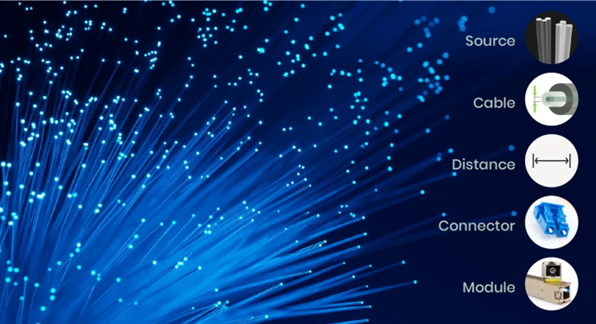
Fiber optics is an important technology used to transmit information and is widely adopted by telecommunication and other industries. Since fiber has multiple advantages, including high bandwidth, longer transmission distance, and stability, it is often used to transmit telephone, internet communication, and AV signals.
As the technology is much more complicated, there are some misunderstandings over fiber optics. In this article, we’ll introduce you to the principles and features of fiber optics, including fiber connectors, modules, and comparisons between single-mode and multimode fiber. At the end of the article, you can learn how to choose proper fiber optic cables and equipment based on your transmission needs.
How Does Fiber Optics Work?
Fiber optic transmits information by sending pulses of light within the optical cable. When the light travels through the core, it is constantly reflected by the cladding and passed rapidly, which is a phenomenon called total internal reflection (TIR). The speed is about 2/3 of the speed of light so information carried by optical signals is transmitted at a high speed.
To ensure information is carried by the light is stable and clear, amplifiers are often used to relay light-wave signals. All the features make fibre optic communication considered a high-speed, efficient, and stable way to transmit information.
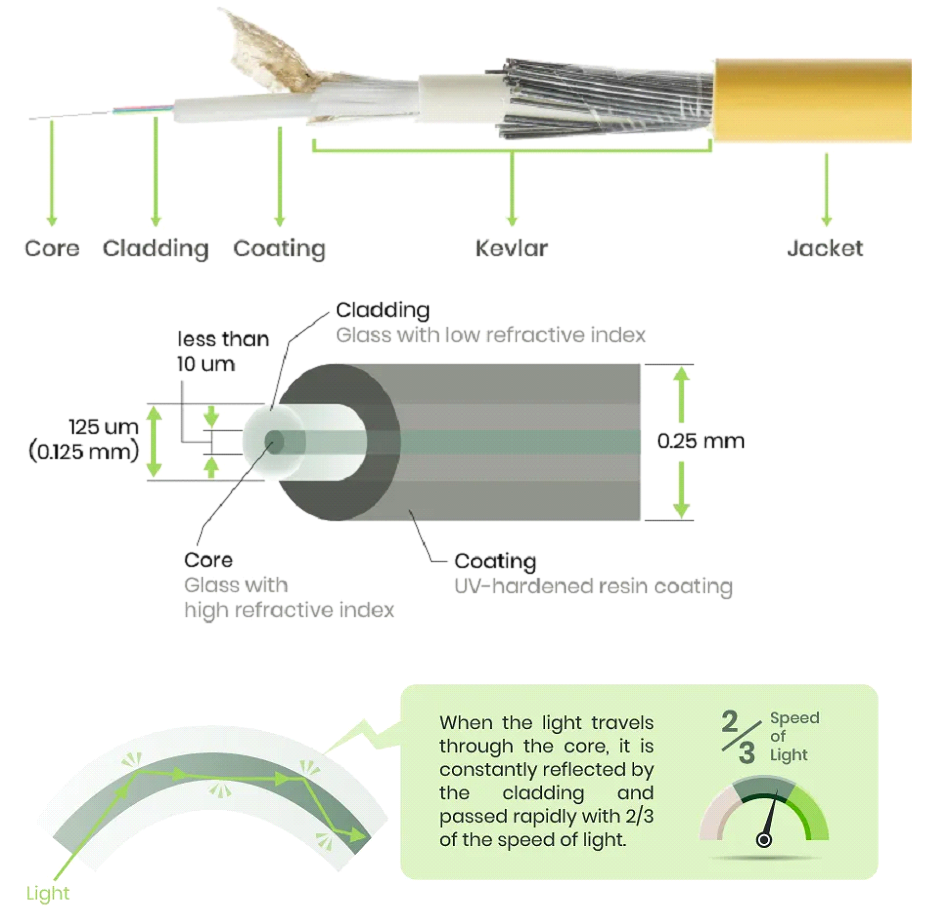
What Is Fiber Optics Made Of?
There are two types of fibre optics’ materials:
- Glass fiber, which is silica-based, and
- Plastic fiber, which is made from PMMA and polystyrene.
Regarding applications of fiber optics, plastic and glass fiber are selected for their own advantages.
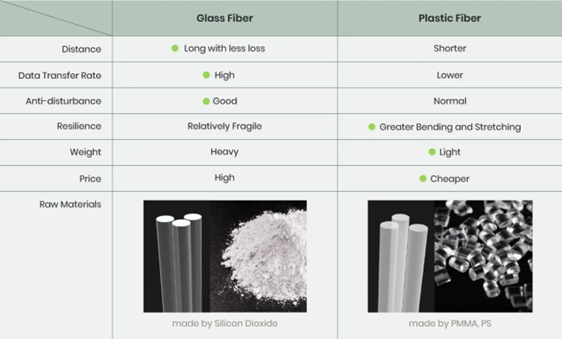
Single-Mode Fiber vs. Multimode Fiber
Single-mode and multimode are the most common fiber types, with a main difference in their core diameters.
What Is Single-Mode Fiber?
Single-mode fiber has a core diameter between 8μm to 10μm, which allows only one single ray of light to pass. It can transmit signals for up to dozens of kilometers. The wavelength used by single-mode fiber is about 1300nm – 1550nm. Because of the intricate techniques used, the price is often costly.
What Is Multimode Fiber?
Multimode fiber, in contrast, has a core diameter between 50μm to 100μm, which allows multiple rays of light to go through. It uses a wavelength of about 850nm – 1300nm. While a larger core diameter makes multimode cheaper, the light within can travel hundreds to thousands of meters. If single mode is too pricey, you may consider the multimode fiber instead.
In addition, depending on its diameter and bandwidth, there are different types of optical multimode: OM1, which can travel 275m; OM2, 550m; OM3, 1,000m; and OM4, 1,100m.
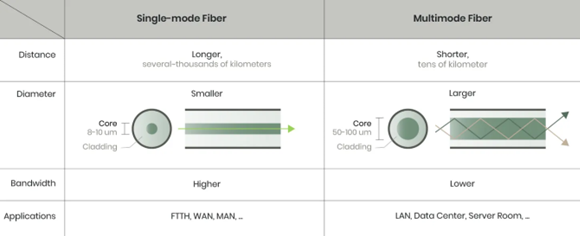
Fiber Connector Types
The most common question asked is which connector to use. Many fiber connectors can look alike and confuse users, while a wrong connector will impede transmission. Here are some typical fiber connectors.

LC (Lucent Connector)
- A small connector with a 1.25mm diameter; often used with single-mode fibre.
SC (Standard Connector)
- A connector with a 2.5mm diameter; often used with both single- and multimode fiber. SC is also typical but less than LC.
ST (Straight Tip Connector)
- A bayonet-style connector; often used with multimode fiber.
FC (Ferrule Connector)
- Like ST with a threaded body, often used with single-mode fiber.
MTP/MPO Connector
- A multi-fiber cable connector: ideal for networks where higher data transfer rates and higher bandwidth are needed.
Fiber Modules
Equipment supporting fiber transmission often has insertion ports for fiber modules. The inserted module can connect to the equipment’s circuit board and convert electrical signals into optical signals. Some equipment has a built-in fiber module so you can only use the module designated.
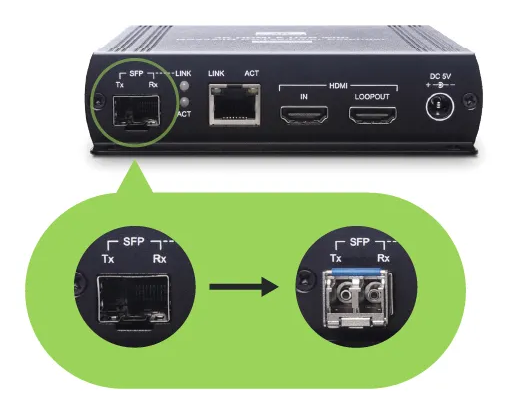
SFP Modules (Small Form-Factor Pluggable)
- SFP: The most common and compact fibre module used for 100/1,000Mbps Ethernet, with up to 6Gbps data transfer rate.
- SFP+: An enhanced version of SFP. The same-size module has a higher data transfer rate but a shorter distance.
- SFP28: The later version of SFP and SFP+ modules. It has the same compact size, while the data transfer rate is enhanced to 28Gbps, suitable for 25Gbps – 28Gbps data transfer needs.
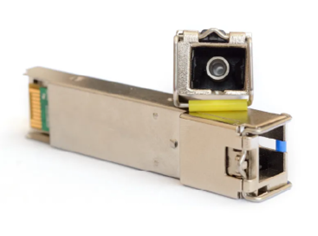
SFP modules have some features:
- When the equipment port supports a newer module, it is compatible with older SFP modules. Nonetheless, if the equipment port supports only an older module, for instance, SFP+, it cannot be used with a newer SFP28 module.
- You do not have to shut down the device when plugging in/out the SFP module as it is hot-swappable.
- Note that you also need to pick a proper connector for your module; LC and ST, for example, can be used with an SFP module.
QSFP (Quad Small Form Factor Pluggable)
- QSFP+: Quad refers to four channels. QSFP+ supports four channels of 10Gbps – 14Gbps data transfer rate.
- QSFP28: Supports 25Gbps – 40Gbps in each channel, with a total data transfer amount of over 100Gbps.QSFP-DD: With the highest data transfer rate in the series,
- QSFP-DD has eight channels of 25Gbps and a total data amount of 200Gbps – 400Gbps.
QSFP modules are the same as SFP modules: They are backward compatible and hot-swappable.
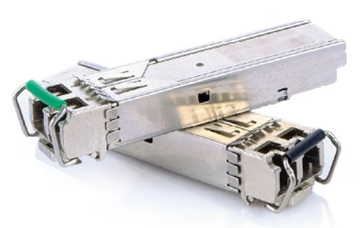
Other Fiber Modules
- GBIC (Gigabit Interface Converter): Supports up to 2Gbps and is larger than SFP. GBIC is now less likely to see in the market.
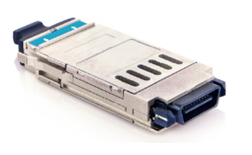
- XFP (10Gbp Small Form Factor Pluggable): Larger in size than SFP modules with a data transfer rate of 10Gbps. Hot-swappable.
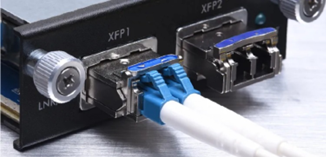
- CFP (Centum Form-factor Pluggable): Designed for 100Gigabit Ethernet, supporting data transfer rates between 40Gbps – 400Gbps. There are CFP, CFP2, CFP4, and CFP8 modules for different needs.
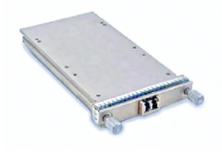
How to Choose the Right Module for My Application?
When choosing a fiber module, consider the bandwidth and compatibility:
- Bandwidth
Choose a module with enough bandwidth that you need. Generally, modules with higher bandwidth are more expensive.
- Compatibility of the Equipment
Choose a module that your equipment is compatible with. Module ports on the equipment may not be compatible with different modules; an improper connection may cause damage to the equipment.
Fiber Connector End Faces
The contact of the connector’s end surfaces will cause insertion and return loss, both of which will degrade the signals.
Insertion loss occurs at the connection point along the cable, including the connector, while return loss is caused by the light reflected to the source. Therefore, end-face polishing can influence the loss caused to the signals.
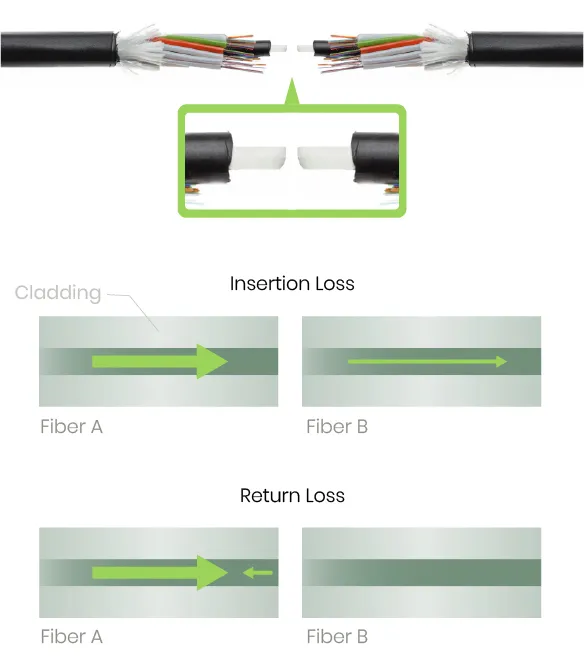
PC (Physical Contact)
PC is a technique of polishing with no angles used on the connector, so they contact directly. However, the surface will have uneven surfaces. PC is only used on multimode fiber optics.
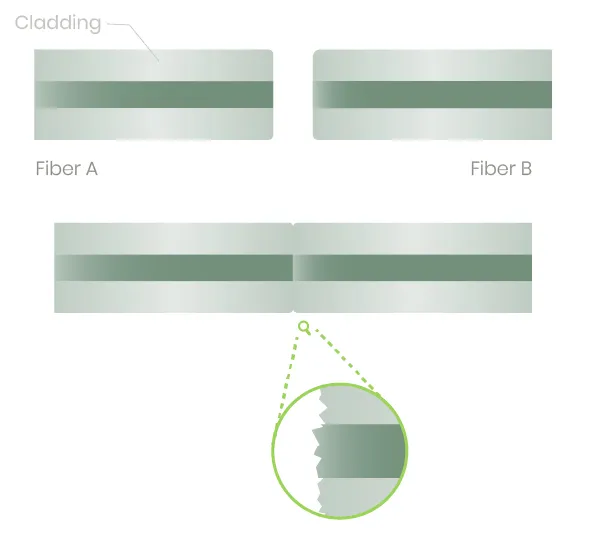
UPC (Ultra Physical Contact)
UPC is an improvement of PC, which has a slight curvature for better core alignment. As a result, signals will degrade less when passing the contact. The technique is mostly used for single-mode fiber optics.
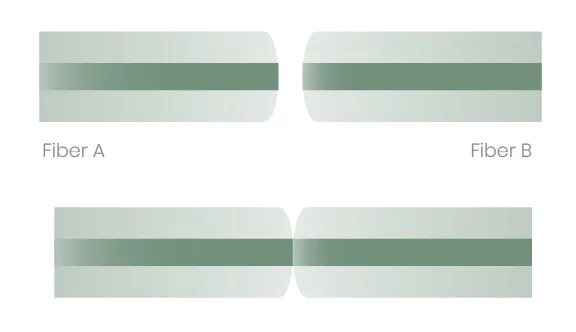
APC (Angled Physical Contact)
For medical, industrial, and energy management, highly stable signal transmission is required. APC, in this case, is suitable. The technique has the end faces polished at an eight-degree angle so the light reflected will disappear and not impair the original signal.
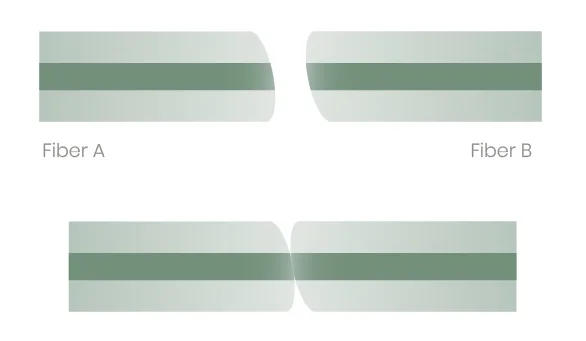
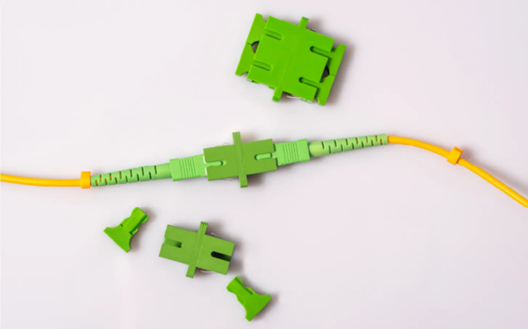
How to Choose Fiber Optic Equipment
Usually, fiber optic equipment is not limited to the module or cable. On the contrary, you need to choose the proper accessories so the equipment can function. As a fiber optics product supplier, we’ve summarized some tips for you to choose the most suitable equipment.
- Choose equipment supporting the signals you need to transmit. Equipment is often labelled with supported signals, such as HDMI, DisplayPort, KVM, TCP/IP, etc. Every piece of equipment may support different signals.
- For AV signals, note the resolution supported by the equipment and its bandwidth. For instance, a 4K 60Hz HDMI video needs 18Gbps to transmit. Choose SFP/SFP+ modules with the right bandwidth.
- Transmission distance determines the cables you need. Generally, fiber optic cable extenders will specify the cable used and its distance. Single mode is often used for distances over 1km, while multimode is chosen for under 1km, but it depends on whether the equipment support both.
- Fiber connectors have various options. Regarding pro AV and surveillance, FC, SC, and LC are typical connectors used for AV transmission. Check if the equipment has built-in connectors or pre-set modules and choose the corresponding modules and connectors.
- Check if the equipment uses single-fiber or dual-fiber.

